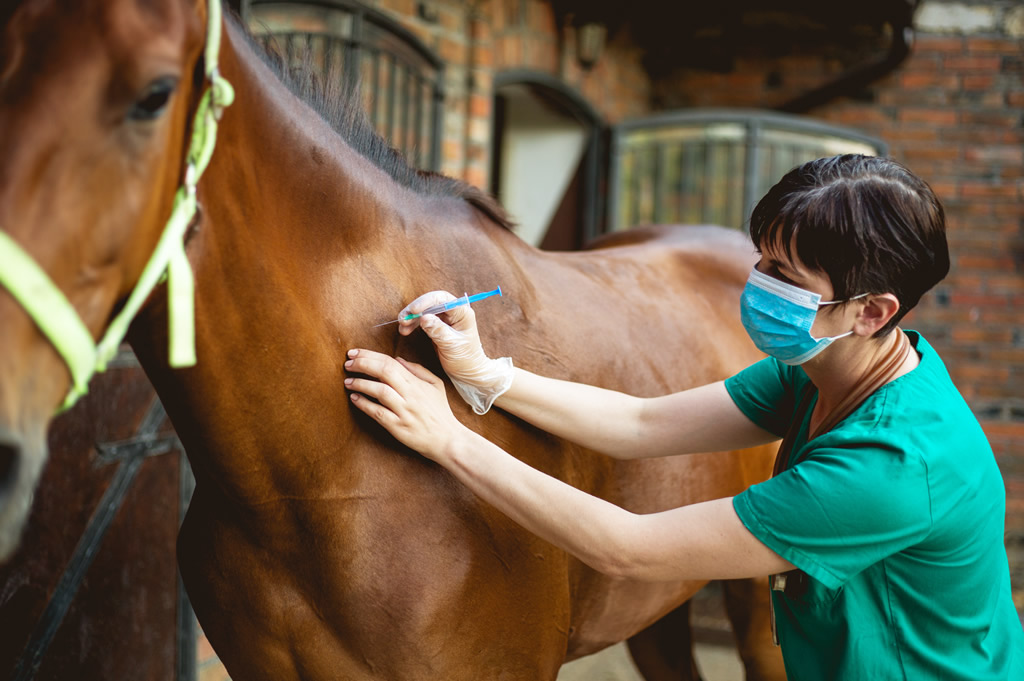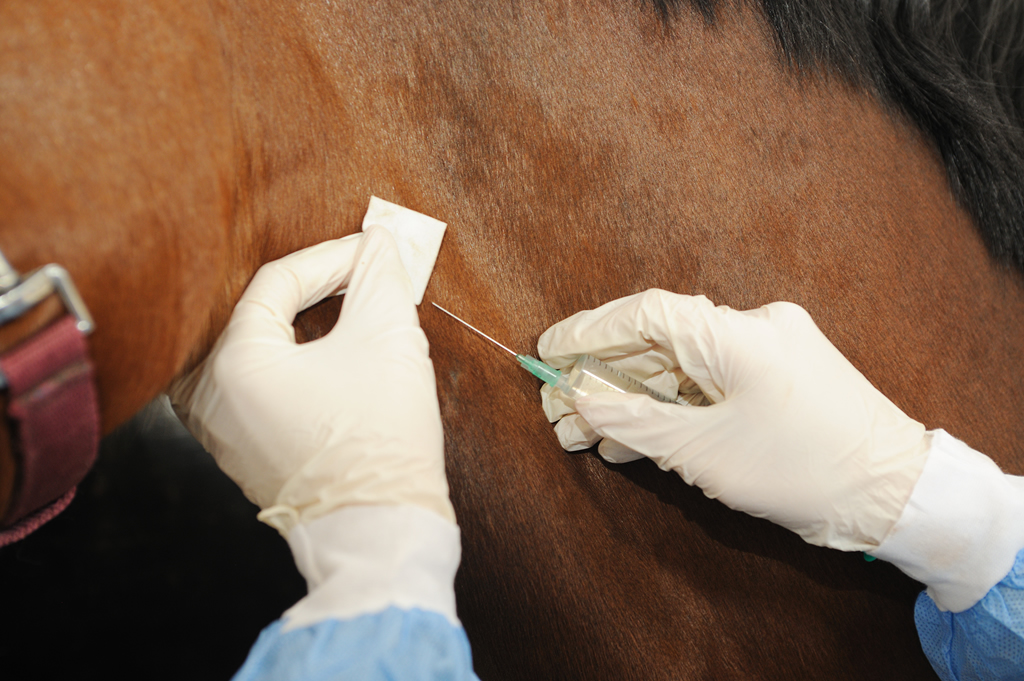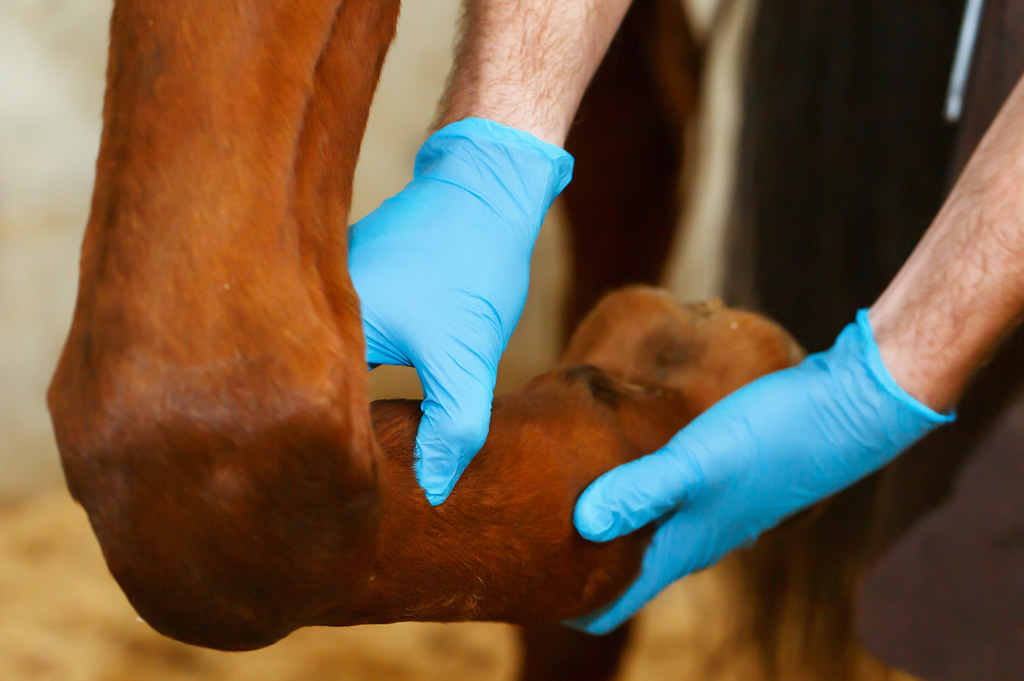Sedation can be an incredibly useful tool for your horse. Equine sedation is used in a variety of situations, and there are a range of sedatives available to give to your horse. At The Insurance Emporium, we’ve spoken to our horse health expert all about equine sedation. Read on to find out when you should sedate your horse, the different sedatives available, and the appropriate aftercare for your horse.
When should you sedate your horse?

There are several situations where sedation can be useful, and even necessary. Some horses may be nervous or anxious when routine procedures are carried out or when travelling, making them a danger to themselves and their handlers. It may also be necessary for vets to sedate a horse when performing minor surgical procedures where the horse remains standing.
Types of horse sedatives
There are several different types of sedatives available for your horse, some of which can be administered at home and others which are generally used by vets.
Oral sedatives
There are two types of oral equine sedatives available in the UK: Acepromazine (ACP) paste and Detomidine gel.
Acepromazine (ACP) paste
ACP is a mild sedative which can also reduce anxiety in your horse. This oral sedative can be purchased from your vet as long as you have a prescription for this, and it can be administered at home if and when required. This sedative is most useful when only light sedation is required, such as for farrier visits, clipping and dentistry.
ACP is administered orally with a syringe, much like a wormer, and should be given around 30 to 40 minutes before sedation is required. The effects should last around two hours.
Detomidine gel
Like ACP, Detomidine can be purchased with a prescription and administered at home. However, the gel must be applied under the tongue on the oral mucosa, so may be more difficult to administer to some horses.
Similarly to ACP, Detomidine takes around 30 to 40 minutes to take effect. The sedation only lasts around an hour but does provide a deeper sedation than ACP.
Intravenous (IV) Sedation

Intravenous (IV) sedation is injected directly into the vein, providing a much deeper sedation within minutes. An opioid drug is commonly administered in conjunction with the sedative. This helps to provide a deeper sedation and control pain when your vet needs to perform minor surgical procedures.
Intramuscular (IM) Sedation
Sometimes it may not be possible for your vet to inject the sedative directly into your horse’s vein, due to either the situation or your horse’s temperament. In these cases, your vet may administer the sedative intramuscularly, which should take around 15 minutes to take effect.
Should I be careful around sedated horses?

Horses that have been sedated can act unpredictably, so it’s important to be extremely careful around them. Never place yourself in a corner adjacent to a sedated horse, and always ensure you have an escape route should the worst happen. If there is more than one person around your horse, ensure you both remain on the same side of the horse.
Horses that have been sedated should remain standing, although they may become a little unsteady on their feet. Avoid any attempt to hold the horse up. Instead, you should encourage them to distribute their weight evenly on their limbs, and stimulate them if they look like they may fall over.
Moving a sedated horse
Moving sedated horses should generally be avoided where possible, and horses that have been sedated should only be moved by experienced handlers. Depending on the level of sedation, two handlers may be required; one to lead the horse and the other to guide the hindquarters. Your vet may also use a head support for a sedated horse.
Aftercare for a sedated horse
Following sedation, your horse may become sweaty, so it’s important to ensure they do not become chilled. You should also remove any hay or feed from their stable until they have recovered from sedation, in order to avoid choking or digestive problems.
You should check your horse following sedation to ensure they are recovering without a problem. Be vigilant as they recover and ensure they do not fall asleep over their door, as this can obstruct your horse’s airways.
We hope this guide has helped you provide the right care for your equine friend if they do need to be sedated! Remember, always follow your vet’s advice when using any form of sedative. If you’re a horse owner, you might want to think about taking out insurance for your horse. At The Insurance Emporium, our Horse Insurance starts with one Standard Benefit, cover for Death, Theft Or Straying. Then, you can tailor your policy with our Optional Benefits! Head on down to The Insurance Emporium to see if we’ve got the right cover for you and your horse.
All content provided on this blog is for informational purposes only. We make no representations as to the accuracy or completeness of any information on this site or found by following any link on this site. We will not be liable for any errors or omissions in this information nor for the availability of this information. We will not be liable for any loss, injury or damage arising from the display or use of this information. This policy is subject to change at any time.


